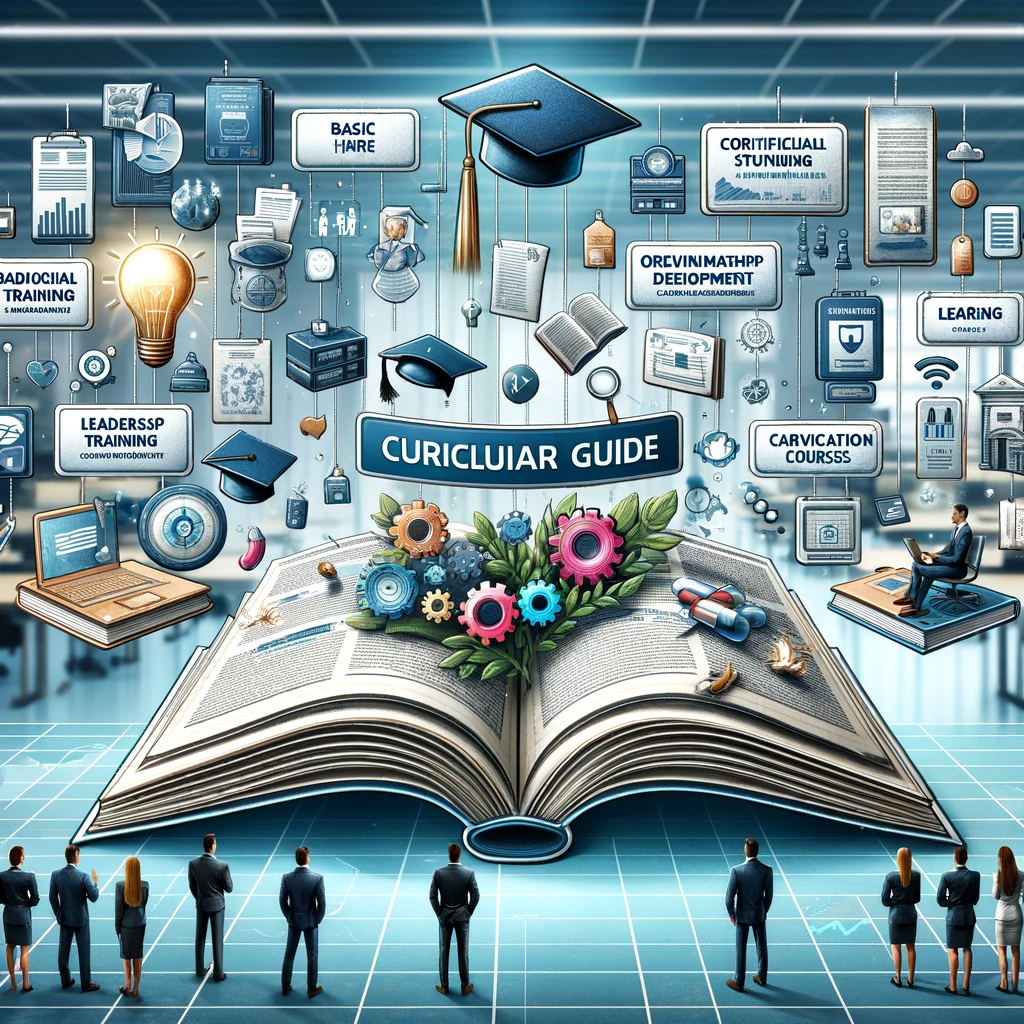“Employee Curriculum Guide” is an essential tool in human resource management that helps organizations plan, develop, and evaluate the careers and development of their employees. In this article, we will explore in-depth what an employee curriculum guide is, why it is important, how it is created and implemented, and how it can benefit both employees and companies. We will also discuss best practices and tips for maximizing its effectiveness.
Introduction
Human resource management is an ever-evolving field that seeks to improve efficiency and effectiveness within an organization. One of the key tools in human resource management is the employee curriculum guide, which is a strategic approach to employee career development and management. In this article, we will explore in-depth what an employee curriculum guide is, why it is important, how it is created and implemented, and how it can benefit both employees and companies. We will also discuss best practices and tips for maximizing its effectiveness.
What is an Employee Curriculum Guide?
An employee curriculum guide, often also referred to as an Individual Development Plan (IDP), is a document that outlines the path an employee should follow to achieve their professional goals within an organization. This guide includes a series of steps, goals, and activities that the employee needs to undertake throughout their career to grow and advance in their professional journey. The employee curriculum guide is created collaboratively between the employee and their supervisor or HR team and is usually updated periodically to reflect changes in the employee’s goals and aspirations, as well as the organization’s needs.
Importance of an Employee Curriculum Guide
The employee curriculum guide plays a crucial role in human resource management and employee career development. Here are some key reasons why it is important:
- Clarity in Objectives: An employee curriculum guide helps employees define their professional and personal objectives, providing them with a sense of direction and purpose in their work.
- Continuous Development: It provides a structured framework for the continuous development of skills and competencies that are essential for success in current and future roles.
- Performance Improvement: By setting clear goals and expectations, the curriculum guide motivates employees to strive for high performance, improving overall productivity in the organization.
- Talent Retention: Organizations that invest in their employees’ development often retain their most valuable talents, reducing turnover and associated costs.
- Employee Empowerment: It allows employees to have greater control over their professional development and helps them take responsibility for their growth.
- Adaptation to Change: As organizations evolve and change, the curriculum guide can help employees adapt to new responsibilities and roles within the company.
- Alignment with Organizational Goals: When the curriculum guide is created strategically, employees’ development goals align with the organization’s objectives, improving cohesion and overall performance.
How to Create an Employee Curriculum Guide
Creating an effective employee curriculum guide requires a structured and collaborative approach. Here are key steps to create a successful curriculum guide:
Step 1: Define Goals and Expectations
The process begins with a conversation between the employee and their supervisor or HR team to define goals and expectations. This includes discussing the employee’s short-term and long-term goals, as well as the skills and competencies needed to achieve those goals.
Step 2: Assess Current Skills
It is important to assess the employee’s current skills and competencies to identify the gaps that need to be filled to achieve their objectives. This may include performance evaluations, skills assessments, and feedback from colleagues and clients.
Step 3: Set Goals and Timelines
Once skill gaps have been identified, it’s time to set specific and measurable goals. Each goal should have a clear timeline for achievement. Goals may include obtaining a certification, achieving a specific performance level, or developing key skills.
Step 4: Identify Resources and Support
The employee and supervisor should identify the necessary resources to achieve the goals, such as training courses, mentorship, online resources, and internal development opportunities. It is also important to define who will provide the necessary support and how it will be delivered.
Step 5: Create an Action Plan
Once goals and resources are established, create a detailed action plan that includes specific activities the employee will undertake to achieve their objectives. This plan should be flexible and adjustable as the employee’s career evolves.
Step 6: Monitor and Review
The curriculum guide process does not end once the action plan is created. It is important to establish a system for tracking and periodically reviewing the employee’s progress and adjust the plan as needed. This allows for adaptation to changes in goals, development needs, and organizational circumstances.
Benefits of an Employee Curriculum Guide
A well-implemented employee curriculum guide can offer a range of benefits for both employees and organizations. Here are some ways in which both parties can benefit:
Benefits for Employees:
- Professional Growth: Employees can identify growth opportunities and actively work towards their career goals.
- Higher Satisfaction: Having a personalized development plan can increase job satisfaction as employees feel valued and supported by the organization.
- Confidence and Self-esteem: By achieving their goals and advancing in their career, employees can develop greater confidence and self-esteem in their abilities.
- Salary Improvements: Developing new skills and competencies can lead to promotion opportunities and salary increases.
- Flexibility and Adaptability: A curriculum guide can help employees be prepared for changes in the organization or industry, allowing them to adapt and grow effectively.
Benefits for Organizations:
- Talent Retention: Organizations that invest in employee development often retain their most valuable talents and experience lower turnover rates.
- Performance Improvement: Employees who follow a curriculum guide tend to be more productive and engaged in their work, improving overall organizational performance.
- Strategic Alignment: When employees’ development goals align with the organization’s objectives, it enhances cohesion and strategic direction.
- Learning Culture: It fosters a culture of continuous learning within the organization, which is crucial in a constantly changing business world.
- Promotion of Internal Leadership: Curriculum guides can identify and develop potential leaders within the organization, reducing the need for external talent hiring.
Tips for Effective Employee Curriculum Guides
To ensure that an employee curriculum guide is effective, here are some key tips to consider:
- Open Communication: Encourage open and honest communication between the employee and the supervisor to understand development goals and needs.
- Flexibility: Curriculum guides should be flexible and adaptable as circumstances and employee goals evolve.
- Mentorship and Support: Provide mentorship and support to employees as they work toward their development goals.
- Measurement and Tracking: Establish clear metrics for evaluating employee progress and conduct regular reviews to adjust the plan as needed.
- Constant Updates: Curriculum guides should be periodically updated to reflect changes in employee goals, development needs, and organizational priorities.
Conclusion
In summary, an employee curriculum guide is a powerful tool in human resource management that helps employees achieve their professional goals and organizations retain and develop their talent. By setting clear goals, providing support, and fostering continuous development, curriculum guides can improve overall organizational performance and provide employees with a greater sense of direction and purpose in their careers. By following the best practices and tips mentioned in this article, organizations can create effective curriculum guides that benefit all parties involved.
If you want to know how we can help you define your curriculum guide and maintain it with the Learning Management Module, contact us.

